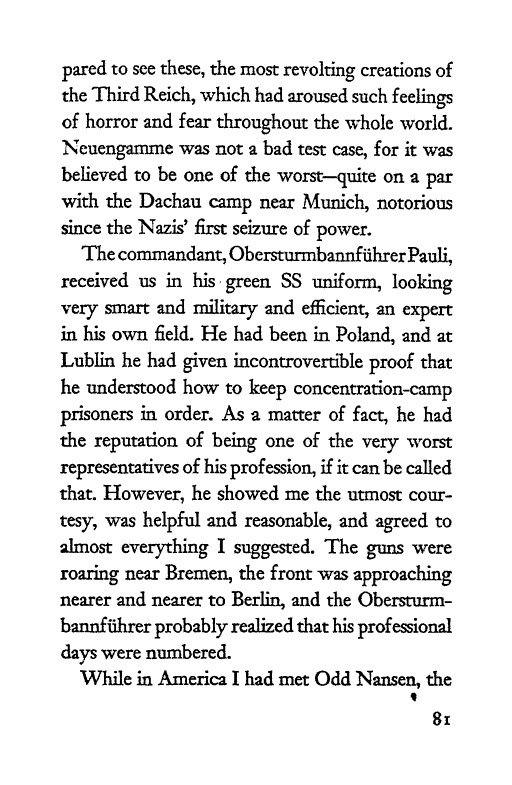Note: Translator Eric Lewenhaupt died in 1968, less than 70 years ago. Therefore, this work is protected by copyright, restricting your legal rights to reproduce it. However, you are welcome to view it on screen, as you do now. Read more about copyright.
Full resolution (TIFF) - On this page / på denna sida - Neuengamme—Hohen-Lüchen March 28th—April 9th

<< prev. page << föreg. sida << >> nästa sida >> next page >>
Below is the raw OCR text
from the above scanned image.
Do you see an error? Proofread the page now!
Här nedan syns maskintolkade texten från faksimilbilden ovan.
Ser du något fel? Korrekturläs sidan nu!
This page has been proofread at least once.
(diff)
(history)
Denna sida har korrekturlästs minst en gång.
(skillnad)
(historik)
prepared to see these, the most revolting creations of
the Third Reich, which had aroused such feelings
of horror and fear throughout the whole world.
Neuengamme was not a bad test case, for it was
believed to be one of the worst—quite on a par
with the Dachau camp near Munich, notorious
since the Nazis’ first seizure of power.
The commandant, Obersturmbannführer Pauli,
received us in his green SS uniform, looking
very smart and military and efficient, an expert
in his own field. He had been in Poland, and at
Lublin he had given incontrovertible proof that
he understood how to keep concentration-camp
prisoners in order. As a matter of fact, he had
the reputation of being one of the very worst
representatives of his profession, if it can be called
that. However, he showed me the utmost
courtesy, was helpful and reasonable, and agreed to
almost everything I suggested. The guns were
roaring near Bremen, the front was approaching
nearer and nearer to Berlin, and the
Obersturmbannführer probably realized that his professional
days were numbered.
While in America I had met Odd Nansen, the
<< prev. page << föreg. sida << >> nästa sida >> next page >>